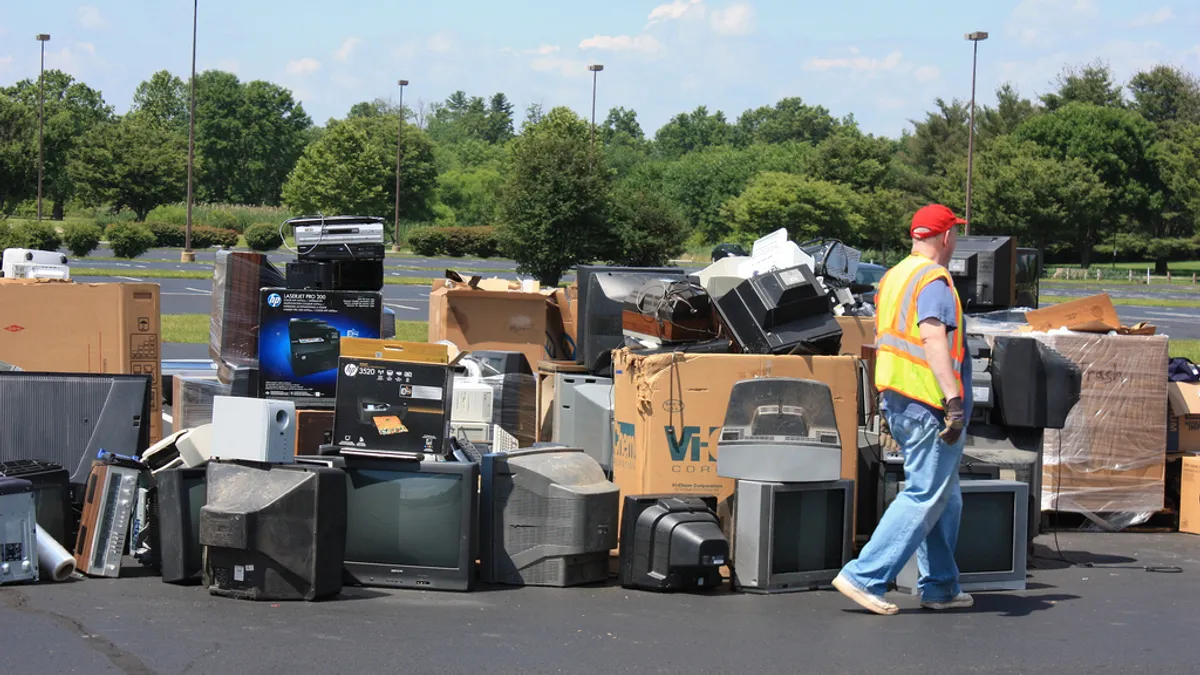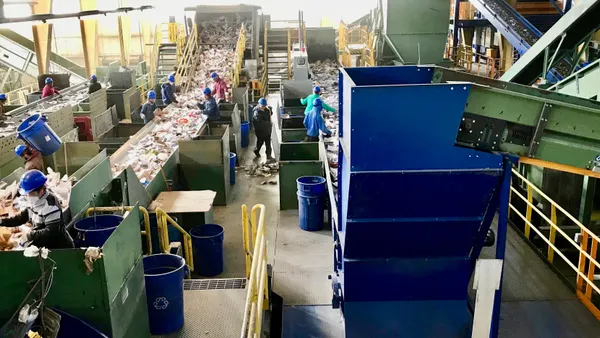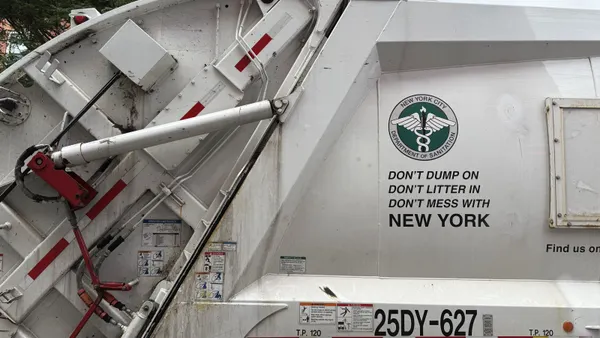Dive Brief:
- 22 US states lack e-cycling laws which has attributed to illegal dumping issues and burdens on municipalities that have to pay to dispose of accumulating electronics in their jurisdictions. Some officials supported a bill to outlaw overseas dumping of toxic e-waste, but that effort was shot down in the House two years ago. The EPA facilitated talks about a national e-waste law that could have eased municipalities' burden, but the electronics industry could not come to a consensus on the terms, so states are left to devise their own rules.
- California, the first state to adopt an e-cycling law, charges a materials handling fee while the other states with similar laws require manufacturers to pay into the collection and recycling of their products.
- Meanwhile, cathode ray tube (CRT) waste has become a growing problem almost everywhere as digital products replace the use of CRT glass, rendering it no value to recyclers. Resa Dimino of the Product Stewardship Institute projects CRTs will continue to accumulate for six or seven years, and that at least 15 years will pass before the overburdened waste stream subsides.
Dive Insight:
Technology is ever-changing, and as it does, electronics continue to come on line then die fast with no national system to handle them at the end of life. The CRT problem exemplifies what can happen as a result, as improper disposal of this near-obsolete commodity has become a potentially dangerous public and environmental health issue.
States that prioritize dealing with e-waste are going about it in different ways. Connecticut, Maine, Oregon, Vermont, and Washington require manufacturers to set up collection sites to make it easy for residents to dispose of their electronics themselves. Other states stipulate collection targets based on the materials' weight.
In Illinois, R2 currently prohibits sending CRT glass to landfill storage cells, however this may change as a proposed state bill would prevent accrediting organizations from penalizing e-scrap companies for this action.
While e-waste management approaches vary, there is one constant: waste management laws must account for the commodities’ market vulnerability and potential consequence to those who must find a way to deal with the pile up, as well as consequences to the environment.









